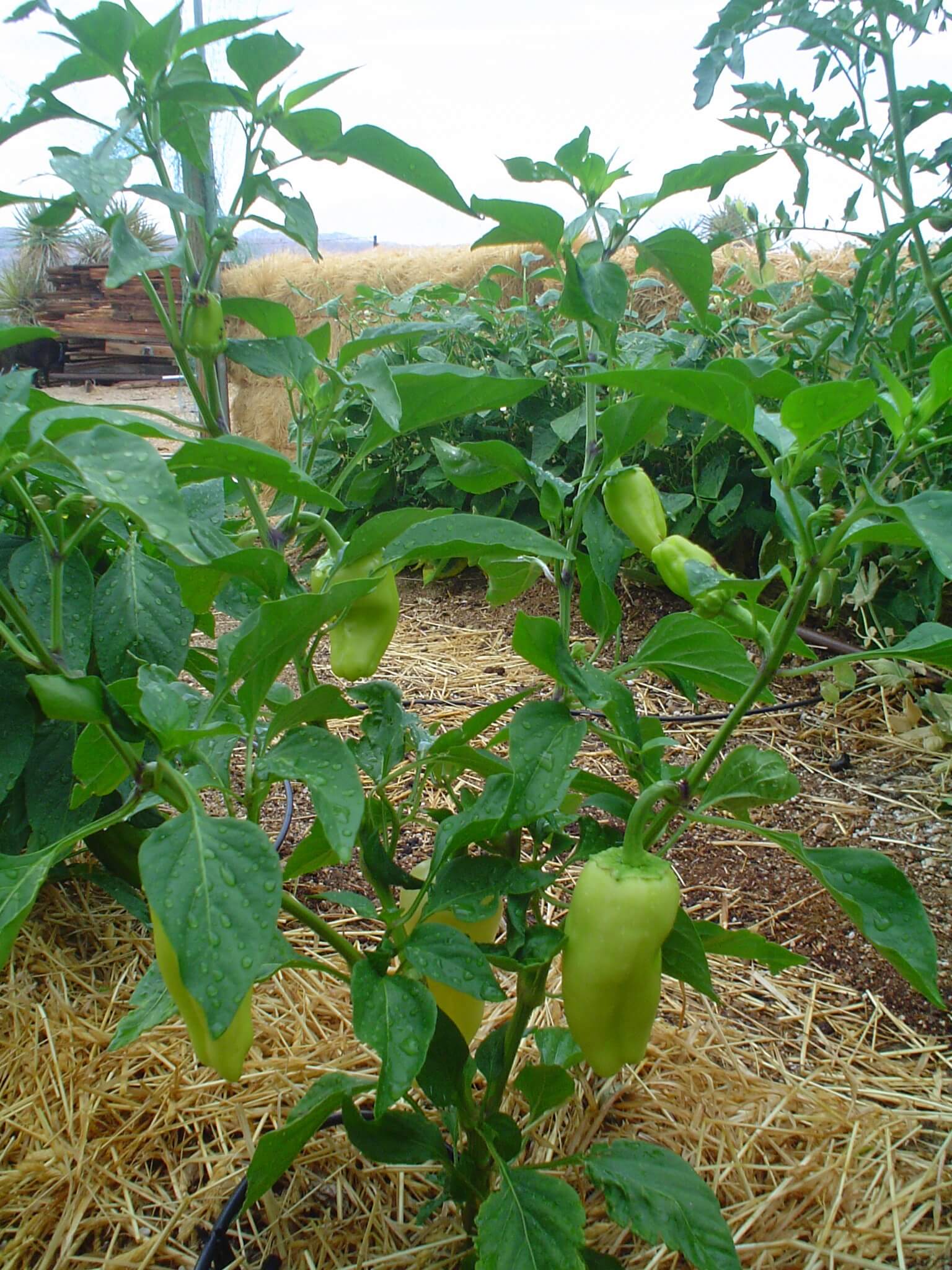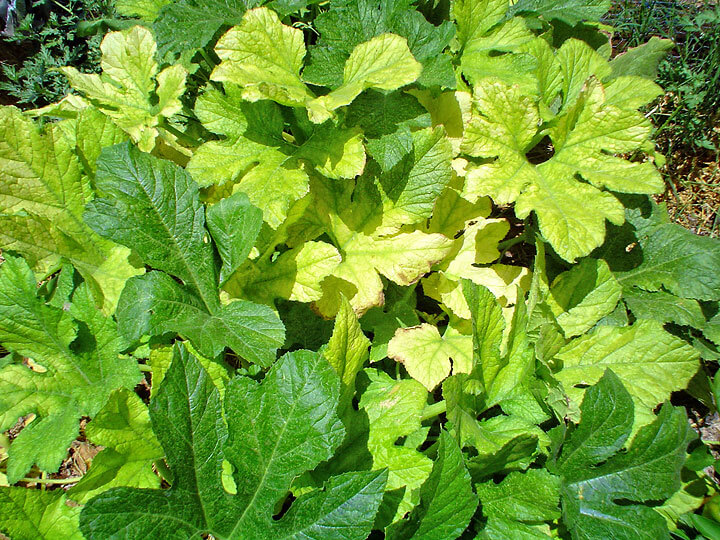
Organic gardeners must be readers of signs, which are the silent and often subtle ways plants communicate their needs to us. Summer vegetable garden nutrient deficiencies appear as changes that indicate something isn’t right. They’ll show up during the heat of midsummer vegetable gardens because plants are working overtime to mature and reproduce, which requires optimal nutrition.
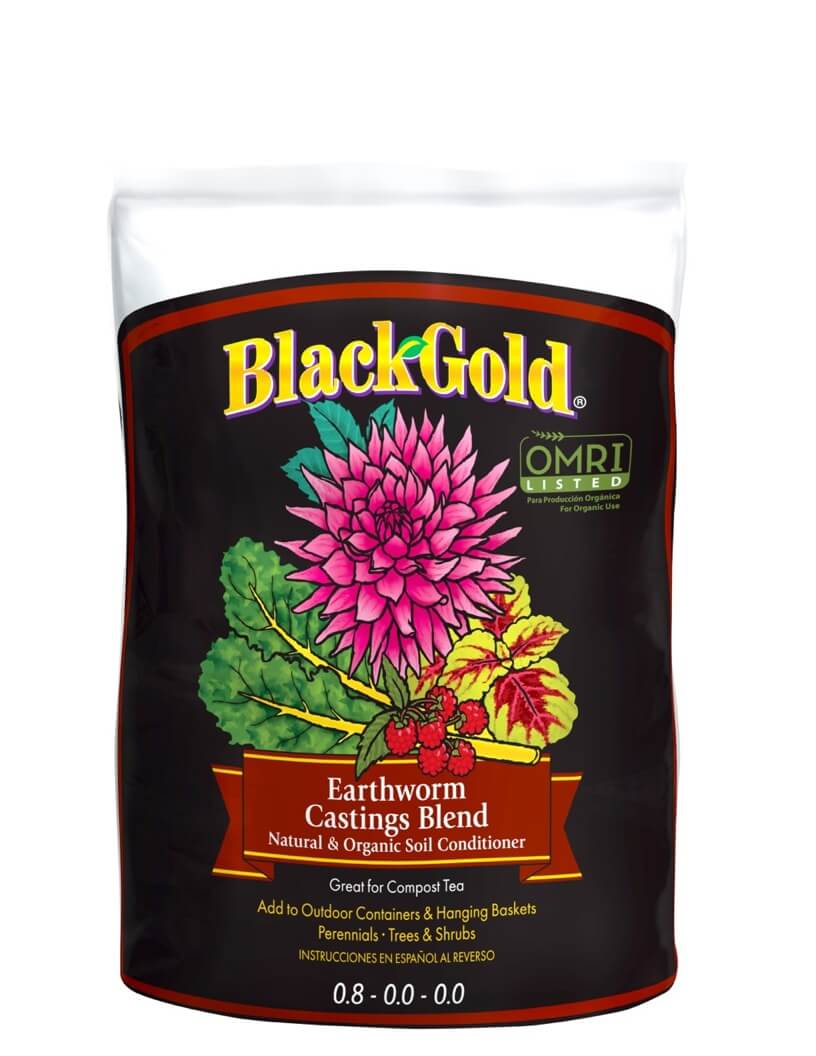 It’s not unusual to find signs of nutrient deficiency in raised beds. This is because the original potting soil may have been poor quality, or has simply worn out over the first year or two because vegetable plants are heavy feeders. If the soil is depleted, the plants weaken, resulting in minimal yields, small size and perpetual problems with pests and diseases. Raised beds must be liberally fortified with organic amendments and fertilizers each year to compensate for what was consumed by the plants over the previous growing season.
It’s not unusual to find signs of nutrient deficiency in raised beds. This is because the original potting soil may have been poor quality, or has simply worn out over the first year or two because vegetable plants are heavy feeders. If the soil is depleted, the plants weaken, resulting in minimal yields, small size and perpetual problems with pests and diseases. Raised beds must be liberally fortified with organic amendments and fertilizers each year to compensate for what was consumed by the plants over the previous growing season.
When garden soil is lacking one or more nutrients, plants often show it by changing color. Their emerald foliage may fade to yellow green or develop yellowing is visible in stripes. Sometimes just the leaf veins are green with yellow spaces, or the veins are yellow with green spaces. Poor leaf color can indicate disease, but often it is due to chlorosis, a result of a macro- or micronutrient deficiency. Macronutrients are needed in larger quantities and micronutrients are taken up in smaller quantities, but both are needed for good growth.
So what are these nutrients?
Macronutrients: Nitrogen, phosphorus, potassium, calcium, magnesium, and sulfur.
Micronutrients: Boron, chlorine, copper, iron, manganese, zinc, molybdenum and nickel.
If your plant is experiencing chlorosis, or you see other curious signs, you may never know exactly what nutrient is absent or deficient. The best solution is a shotgun approach using amendments or fertilizers known to be rich in a wide range of nutrients.
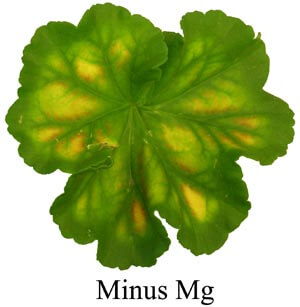 Black Gold Earthworm Castings is perfect for solving micronutrient deficiency. Castings are rich in all sorts of minerals derived from the fertile soils where worms lived, and these can be easily introduced to your soil and root zone. For a larger scale application, cultivate dry castings into the soil around each plant or along each row, then water generously so the material works it way deeper down.
Black Gold Earthworm Castings is perfect for solving micronutrient deficiency. Castings are rich in all sorts of minerals derived from the fertile soils where worms lived, and these can be easily introduced to your soil and root zone. For a larger scale application, cultivate dry castings into the soil around each plant or along each row, then water generously so the material works it way deeper down.
For smaller gardens and raised beds, an application in solution generates more rapid results. Mix castings into a bucket of water, then ladle or pour out this “soup” onto the soil around each plant. Be generous because this is not a concentrated fertilizer, so it won’t burn. It’s impossible to overdo it.
Sometimes young gardens that haven’t benefitted from years of soil amendments can experience macronutrient deficiencies, such as low nitrogen. Because nitrogen is responsible for leaf and stem growth, the plant will show signs of being stunted or it simply languishes when it should be thriving. To test for a nitrogen deficiency in organic gardens, work alfalfa meal into the soil and water generously. If the plants begin to put on new growth and larger more lush leaves within a few weeks after application, you’ll know it’s a nitrogen problem.
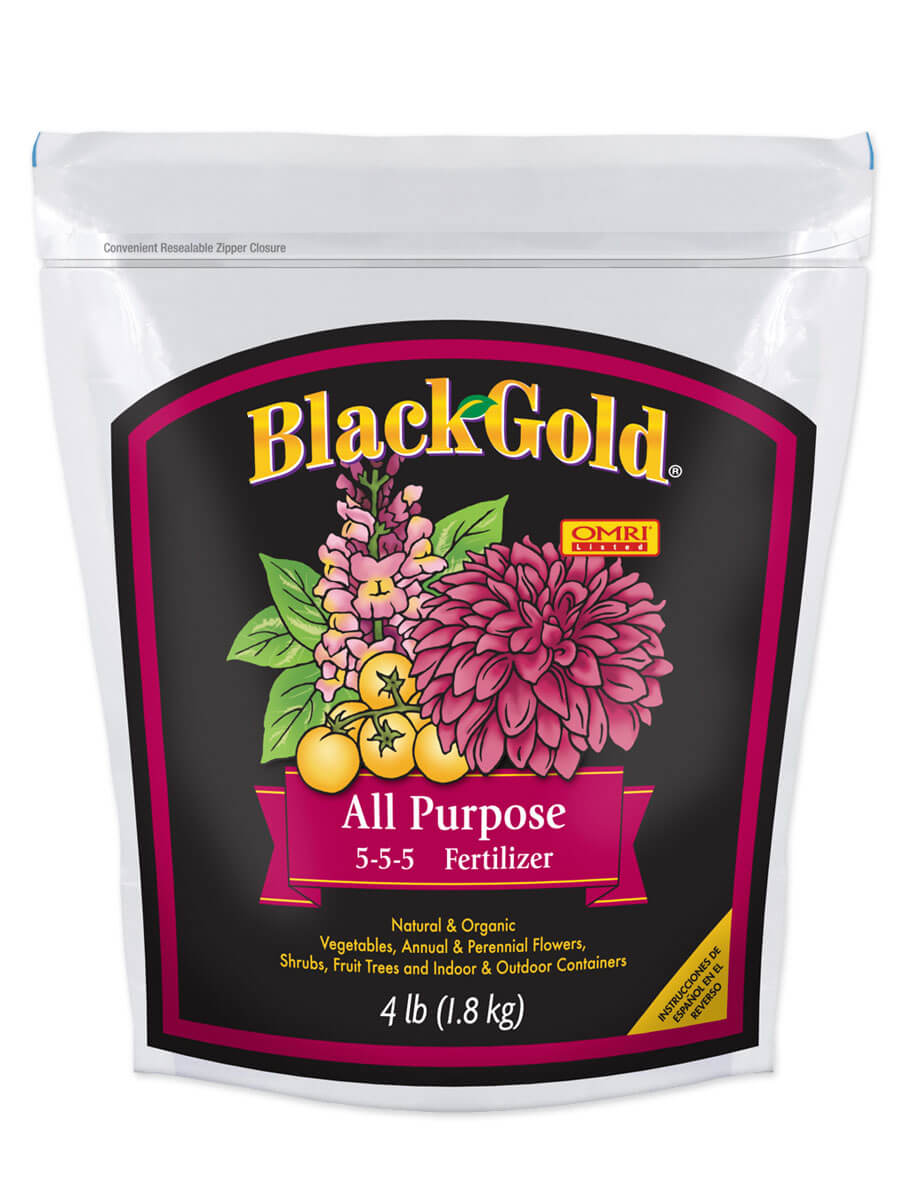 Both macro and micro nutrient problems can be avoided altogether by adding quantities of rich organic amendments such as Black Gold Garden Compost and an all-purpose fertilizer in both spring and fall.
Both macro and micro nutrient problems can be avoided altogether by adding quantities of rich organic amendments such as Black Gold Garden Compost and an all-purpose fertilizer in both spring and fall.
Avoid resorting to poor-quality, less natural fertilizers as a quick fix to nutrient deficiency because it’s only short term and not beneficial to the soil food web. It’s much like eating a doughnut for energy, which won’t last long, then you feel lethargic and crash from low blood sugar. It matters what you eat, how much you consume, and how often you dine. Be diligent, because feeding your organic garden generously in spring and fall with slower acting organic amendments and fertilizers ensures it remains chlorosis free and consistently fertile all year, every year.
